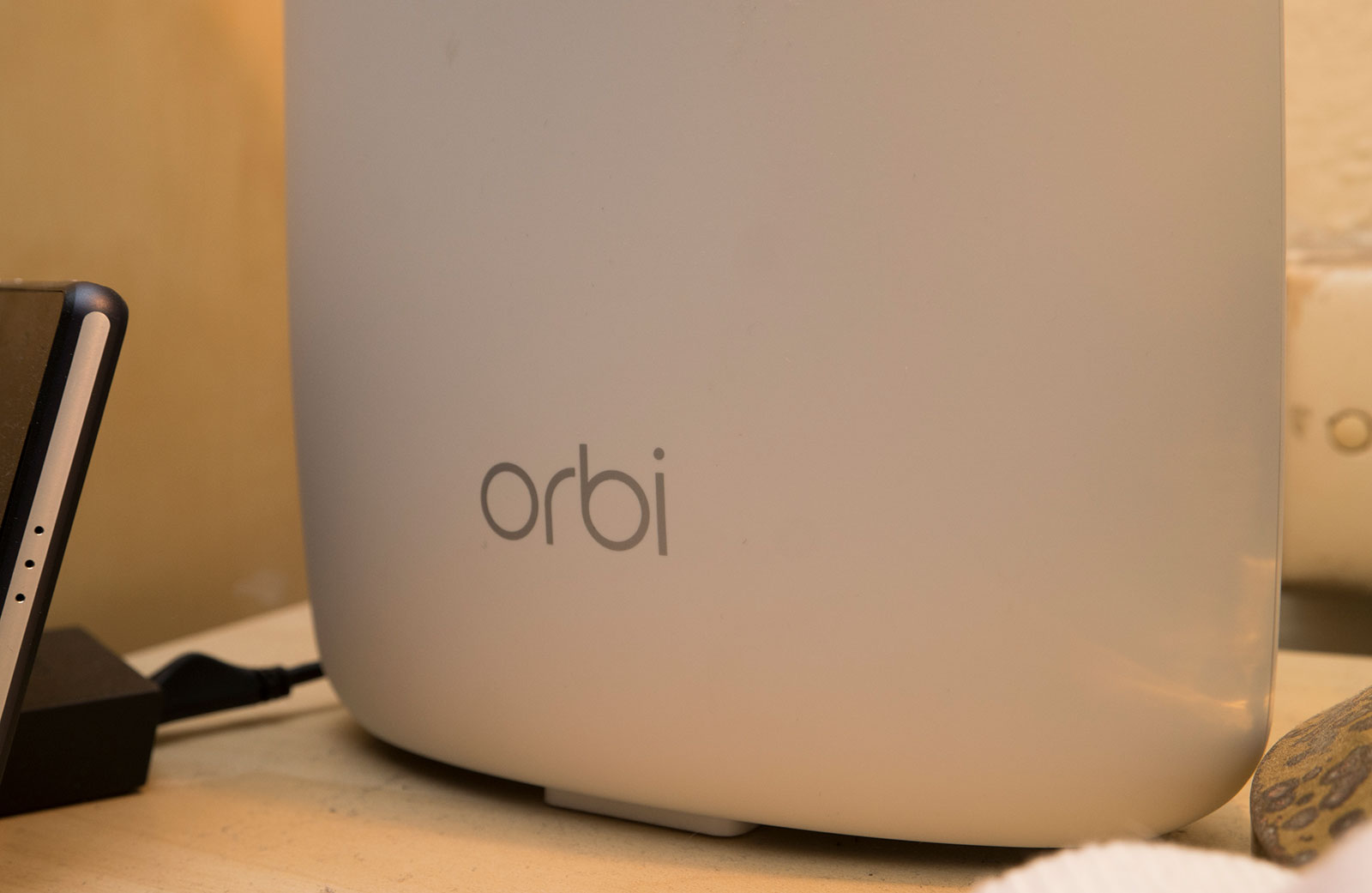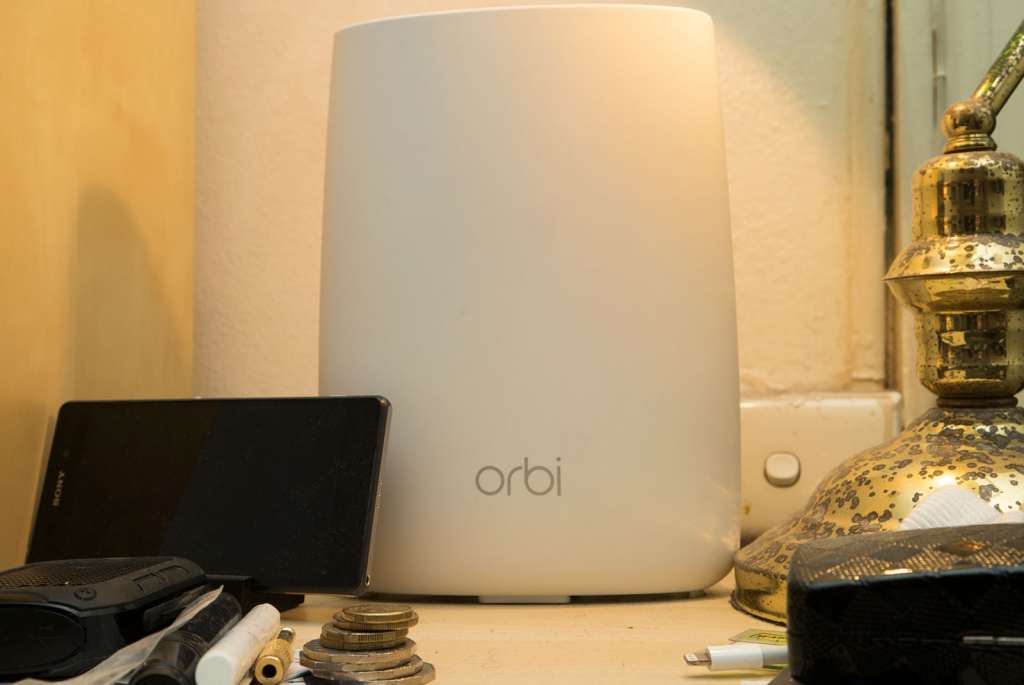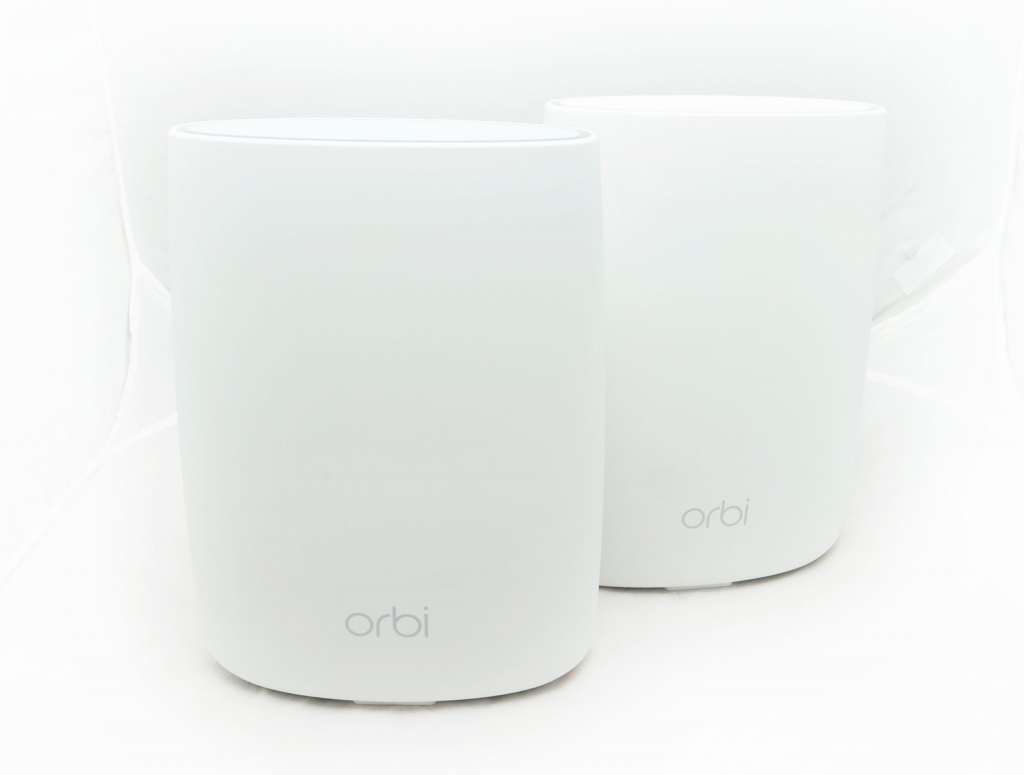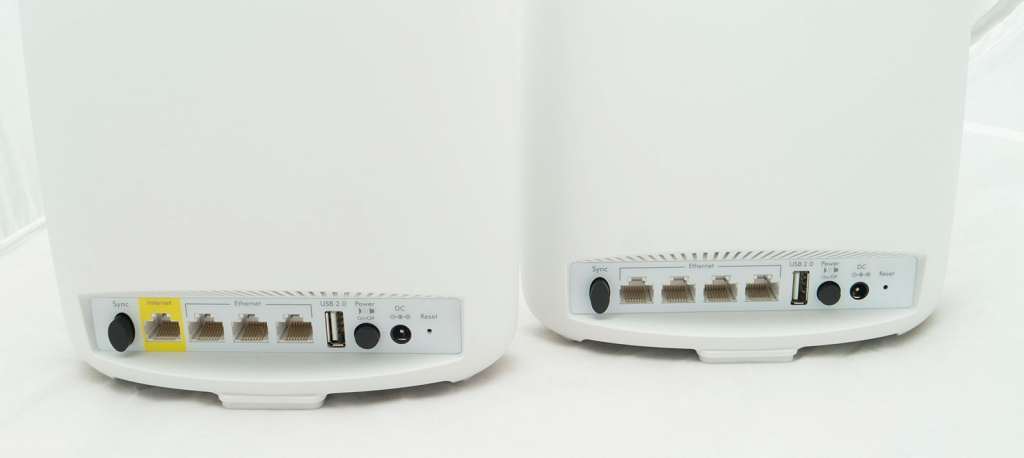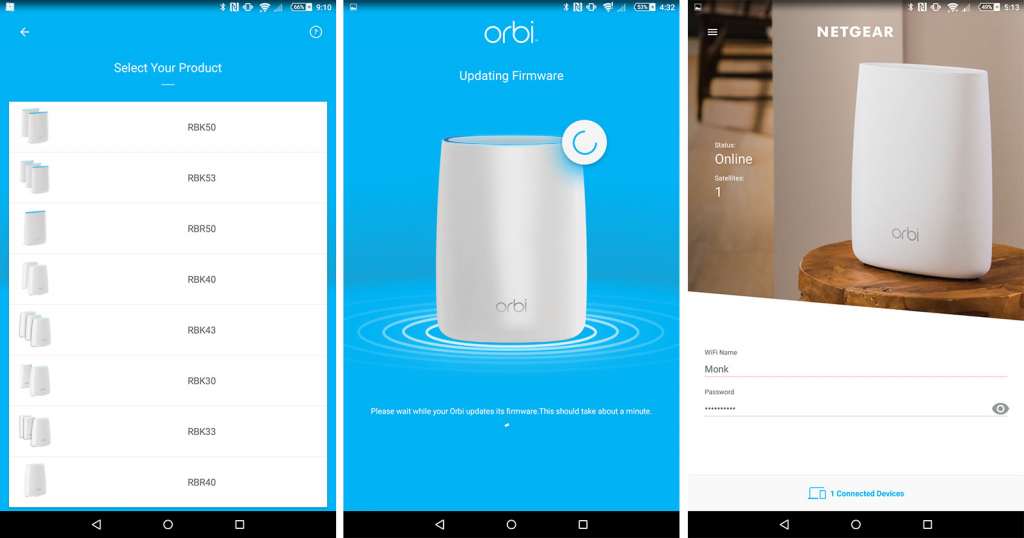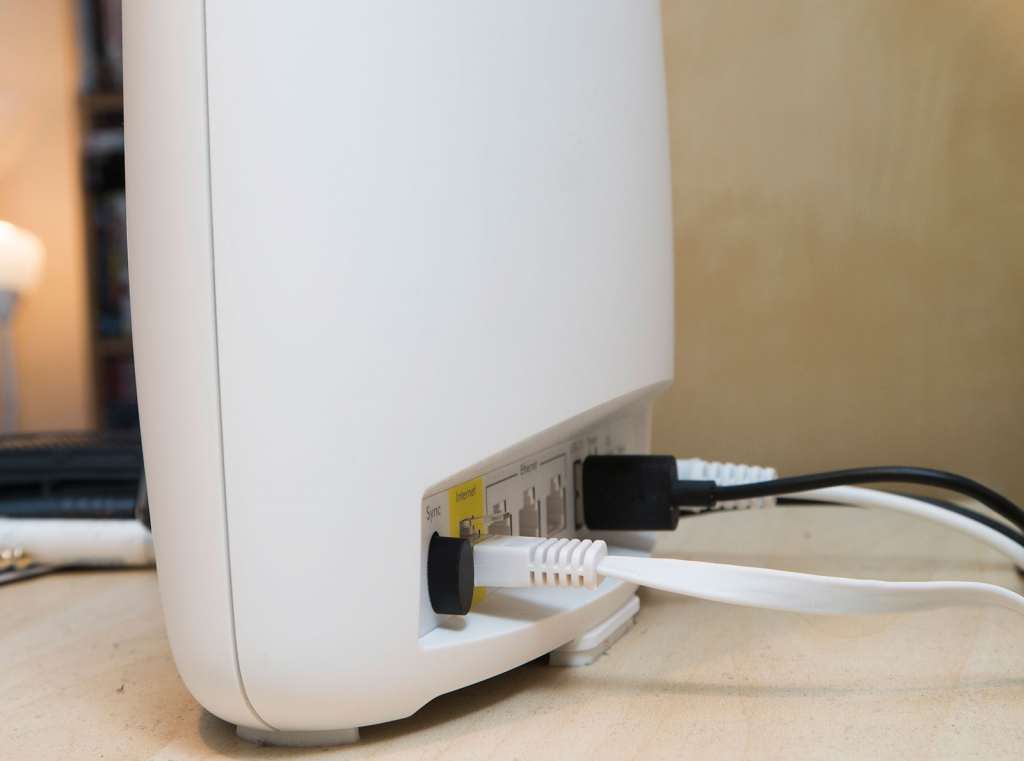Quick review
The good
The not-so-good
Getting network access throughout your home isn’t something that all will call easy, and while bigger routers should theoretically do it, it’s not always that easy. Netgear’s Orbi could be the answer, but it’s not for everyone.
When it comes to networking, there tends to be three specific problems with modern computing environments: range, design, and ease of use and implementation.
Here at Pickr, we’ll call a spade a spade, and in the case of networking devices, all three of these issues are pretty consistent across the networking appliance landscape, with problems getting network connection across a home or business space, a product design that often looks like it came right from the future with a whole bunch of antennas attached for good measure, and the knowledge ahead of time that you’ll need a degree to operate things.
It’s frustrating, and unless you do have that degree, chances are you’re going to be frustrated with it. Pain points for networking rarely go away, and unless you have a friend that knows what to do, you’re probably going to feel them regardless of what it says on the box.
However Netgear’s “Orbi” range of products aims to do away with every single one of these pain points, and it all starts with that design.
Design
One of the most important parts of the package, Orbi’s design is meant to look about as un-network-like as it gets, with an almost flattened cylindrical box waiting for you for installation on one side of the house, while a second waits for you on another.
Yes, Orbi is a minimum of a two-part solution, with each part acting as a network strengthener. It’s already a foregone conclusion that you have enough wireless devices to make a proper network, and if you happen to have more than two bedrooms and your home goes up or out, you probably have a reasonable amount of space, also.
Orbi caters to this specific need, with its multi-point design reliant on its base station and satellite logic, which is this: you start with the base station, and when your network range starts to thin out, you place a satellite for the network to be bolstered and improved.
The logic is therefore simple: expand your network where and when you need it using a product designed for this style of network.
That’s an area the design factors into, because with satellites existing in places where network hardware may not, the chassis has to go with a decidedly more home-friendly look, going instead for a style that could work in the kitchen, the living room, the kids room, study, and so on.
Simply put, Orbi doesn’t look like your traditional network hardware. Clean, pure, and looking kind of like it has come out of the labs of Amazon’s Alexa (which Australians don’t have yet), it’s more like that would happen if Pixar had designed networking gear, because it kind of looks like “Wall-E”‘s Eve.
Features
Unlike the animated flying robot from the Disney and Pixar film, this product won’t soar through the sky and take you away, though it might have the ability to do push your networking speeds higher, because that’s what it has been designed to do.
With a base station built to talk to its satellites — one of which comes in the box, but others are optional if you need Orbi to go out further — Netgear’s Orbi is designed to get the message around your home or business that range and speed are integral to your life, which is precisely what this system is designed for.
To start with, you’ll find exactly what we’ve already mentioned: a base station and a satellite, and each of these is very similar.
They each offer four Ethernet ports on the back, as well as one USB 2.0 port for plugging in devices like hard drives, phones, and possibly printers. They each also offer three bands of wireless connectivity, totalling 3000Mbit and spread out in a 1733, 866, and 400 configuration across 5GHz, 5GHz, and 2.4GHz.
Set up is fairly easy, with an app helping you do the heavy lifting and connecting the base stations together, and all you really need to do is decide where you’re going to put them.
With no modem inside, the first location is a pretty logical decision, placing it near your current modem. Netgear Orbi satellites, however, will go anywhere where you feel the range could do with boosting, essentially as it begins to taper off.
In-use
Once the router is installed and set up, Netgear tends to make things pretty easy: simply plug what you need into the back of the main base station router, and any extra bits you might have into satellites, with these ports adding hardwired devices to the network easily.
That means if you have an extra Orbi satellite in the TV room, getting your TV, your Xbox, your PlayStation, and Apple TV on the network is as easy as plugging them into one of the four Ethernet connections found at the back of the satellite, likewise with extra bits and bobs through the rest of your home.
Orbi is also sending out both a 2.4GHz connection and 5GHz connection at once, too, so depending on the needs of the device, you may find running the both under the same network connection works just as well, meaning no matter where you go, you’re not necessarily needing to jump across different network connections.
Granted, your network connections have limitations, because on Orbi, your 2.4GHz band is for 802.11b/g/n traffic of up to 400Mbit while the 5Ghz band services connections for 802.11a/n/ac traffic of up to 866Mbit.
Performance
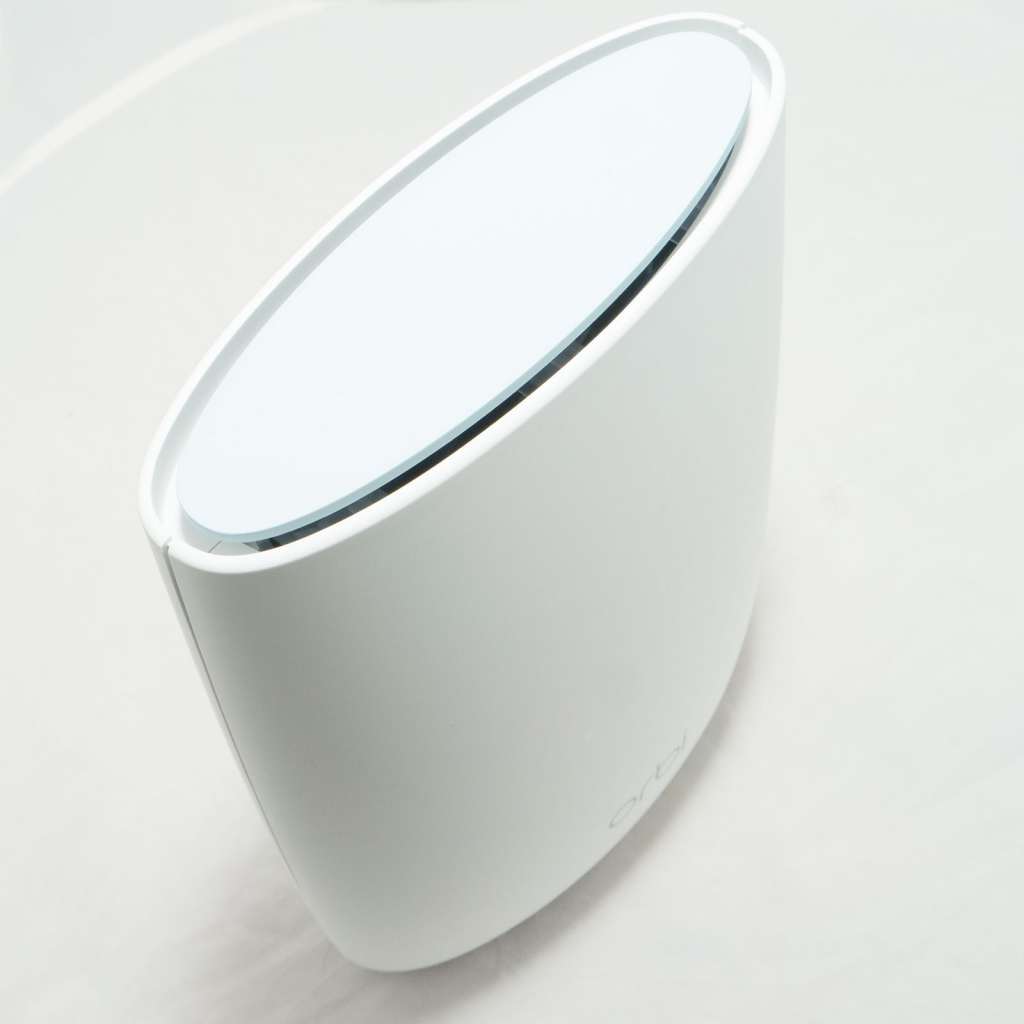
Typically, tri-band devices offer three sets of network bands for your home, either uniting them under the one network name, or creating different networks for your different devices.
For instance, in a typical tri-band network configuration, you’ll have two 5GHz bands and one 2.4GHz band, with the two larger bands for networks where you’re expecting a large amount of data and speed to be consumed, such as with TVs and computers, while a 2.4GHz band is usually given to a network name and devices with lower needs, such as phones and the kids.
But Orbi doesn’t work in this way.
Instead, you need to think or Orbi more like it’s a double-band router, offering only 2.4GHz and 5GHz networks, because its third 5GHz band is specifically there to talk to Orbi devices like the base station and any other satellites you throw in.
That makes the numbers a little weird, because while the router is essentially rated for AC3000 — meaning you have 3000Mbit of transit traction — the numbers add up a little differently. With 866Mbit on the 5GHz and 400Mbit on the 2.4GHz, you’re missing a good 1733Mbit, the fastest of the network bands.

Unfortunately, Netgear’s Orbi uses the extra third band for that 1733Mbit connection, meaning you miss out on the fastest wireless connection, and the router uses it solely for the backend of its network connections, running the data to and from base station to satellites so that the information is distributed quickly across the network, not so that your devices connect at the fastest speeds. It’s not a bad move, just a curious one, because it means the router gets to decide on the fastest band to shuffle data around, not you.
Think of that third band as the service elevator in a hotel: in theory, if you took that service elevator, it might make your stay a little easier, but it’s there solely for the staff, so they can shuttle things back and forth easily without the congestion of the publicly available and forward facing regular elevators.
That’s essentially how Orbi works, using the third band for the moving of data between the points, which in a way is similar to a mesh network, but still not quite. Differing from a mesh, Orbi isn’t turning each point in its own network strengthener, but rather another point to extend the network.
Like a mesh network, it means you can add extra Orbi satellites to extend what you have, potentially pushing out a network and making it go out further or push up higher, and it’s an effect that works tremendously well if you don’t have a solid router as it is already.
What needs work?
However, if you have a solid router already — like say one of Netgear’s Nighthawk routers — Orbi doesn’t do much of anything, and some might say it’s useless in that environment.
Granted, Netgear’s Orbi differs greatly from the target market normally applied to in the Nighthawk range, and if you’re buying a Nighthawk — or any other large and meaty router from companies like D-Link or Linksys, and something that probably looks out there, alien, and very geeky — Orbi isn’t really for you, and there’s a good chance that it just won’t make much of a difference.
Tested in comparison against the Netgear Nighthawk X4S, the modem router this reviewer is currently using, the Orbi offered much the same experience, with technically a better and more far reaching range, but not much difference in the data speed one could find.
That’s the difference between a network extension and how a mesh network would work, with the extension able to make the reach further but not increase data speeds, something a mesh network should successfully bypass thanks to each network node in a mesh strengthening the network altogether.
A totally different concept, mesh networks are one of those things that have never truly been embraced by computer networks, used instead for the lower needs of sound transport, such as with Sonos’ Bridge and Boost devices for spreading audio wirelessly around a home.
Netgear’s Orbi is similar, but not quite the same, and so while you get reach, you may not get much improvement in the way of data speed, especially if you already have a decent router in play.

Our other quibble with Orbi comes from product range, because while there are quite a few different units now available, not a single one of them includes a modem built in, meaning you’re always going to have to add the router to a modem.
In a country where most of its population relies on some internet connection that requires a modem — because that whole fibre to the premises thing just didn’t pan out the way many expected, did it NBN Co? — it would have been nice to see a variant arrive with one built in, so we could all cut back on one more gadget.
And that leads us to one final quibble.
Value

In fact, with the main Orbi AC3000 model arriving with one base station and one satellite costing a staggering $749, Netgear’s Orbi is anything but cheap.
Netgear’s other Orbi models push the prices back to some sense of normality, with $499 for the RBK30 and $599 for the RBK40, but they’re still quite expensive, especially since they slow things down with less bandwidth and range (AC2200 speeds for both, up to 250 square metres depending on the model).
The positives for Orbi’s high pricing of course come from ease of use and expandability, but still saying that, none of the options are what we’d call affordable, making them ideal for families and businesses with a lot of space to cover and enough money to cover that space with it.
Final thoughts (TLDR)
If money is no problem and you’ve struggled to find the right networking solution, Netgear’s Orbi is well worth a look, providing an easy way to get into networking without the complicated experience other solutions provide.
It’s not perfect yet, and we take aim at one of the back-end design, particularly since Orbi’s other units — the RBK40, for instance — uses two 866Mbit bands, one of which is made for the base stations and satellites to talk to each other. This makes us wonder why Netgear didn’t use that middle network for its communication instead of the faster 1733Mbit, or why neither give you the choice.
That’s the frustration with Orbi: it’s fast, but it’s also not fast, and it doesn’t give you that option. Surely deciding whether the network lets your faster devices connect at a faster speed should be within the reach of the consumer, not the networking manufacturer.
As good as Orbi is, that limitation is concerning, because while you’re getting a tri-band router, it only ever acts as a two-band router, and an expensive two-band router without a super fast connection for your 802.11ac devices at that.
Despite this, Orbi is a good start for big homes keen on spreading the connection everywhere, particularly if they have a lot of devices. Just don’t expect the complaints about network speed to drop, because unless Netgear does some fixing, they’ll stay the same even if your range has improved dramatically.


